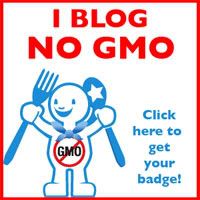 High Fructose Corn Syrup is a readily used sweetener in processed foods in the U.S.. And, according to the HFCSfacts site, may even be a health food:
High Fructose Corn Syrup is a readily used sweetener in processed foods in the U.S.. And, according to the HFCSfacts site, may even be a health food:"In terms of composition, high fructose corn syrup is nearly identical to table sugar (sucrose), which is composed of 50 percent fructose and 50 percent glucose. Glucose is one of the simplest forms of sugar that serves as a building block for most carbohydrates. Fructose is a simple sugar commonly found in fruits and honey. ...Research confirms that high fructose corn syrup is safe and nutritionally the same as table sugar. ...It contains no artificial or synthetic ingredients. "So it's a natural thing, just like fruit, sugar cane, and honey and serves as the building blocks for carbs. It's completely safe and "all natural." Even the calories are about the same in high fructose corn syrup as in sugar. What a relief!
"High-fructose corn syrup could be all-natural, if cornstarch happened to fall into a vat of alpha-amylase, soak there for a while, then trickle into another vat of glucoamylase, get strained to remove the Aspergillus fungus [like peanuts, corn can grow this mycotoxin, a toxic mold (see peanut scare for more info.)] likely growing on top, and then find its way into some industrial-grade D-xylose isomerase." Dr. MercolaHFCS is about as pure as this complicated chemical process naturally occurring in our world.
HFCS rise in popularity coincides with the rising obesity and diabetes in our country but that may be coincidence since there was also the rise in fast foods and processed foods generally during this same time.
 There is probably some link to the rising use of HFCS and the effects it has had on our food consumption because things like soda, tantalize our sweet taste buds but never satiate us, causing us to want and eat more. But on the front page of the HFCSfacts site it clearly states:
There is probably some link to the rising use of HFCS and the effects it has had on our food consumption because things like soda, tantalize our sweet taste buds but never satiate us, causing us to want and eat more. But on the front page of the HFCSfacts site it clearly states:The American Medical Association (AMA) recently concluded that "high fructose corn syrup does not appear to contribute to obesity more than other caloric sweeteners."That's because a calorie is a calorie, and sugar and HFCS do contain about the same number of calories per unit. And true, they both contain fructose and glucose. But since HFCS is man-made, it can range anywhere from 42% to up to 90% fructose. That's not exactly the same composition as naturally occurring sugar. Having a higher fructose amount sounds good intuitively. Fructose sounds like fruit and is found in fruit so we assume it must be healthier than glucose:
"but every cell in the body can metabolize glucose. However, all fructose must be metabolized in the liver. The livers of the rats on the high fructose diet looked like the livers of alcoholics, plugged with fat and cirrhotic." Dr. FieldOur body breaks down sugar, 100% sucrose, into glucose and fructose. Our body regulates the rate of this breakdown to control the release and absorption of the sugars into our bloodstream.
 HFCS consists of fructose and glucose too so it was seen as similar to sugar. But the body cannot regulate the absorption of this sweetener in the same way. The liver turns excess fructose more readily into fat in the body than it does glucose. The way our body metabolizes foods is one of the reasons why HFCS has been cited as a culprit for increased risks in diabetes, hypertension, cancer, heart disease, and obesity.
HFCS consists of fructose and glucose too so it was seen as similar to sugar. But the body cannot regulate the absorption of this sweetener in the same way. The liver turns excess fructose more readily into fat in the body than it does glucose. The way our body metabolizes foods is one of the reasons why HFCS has been cited as a culprit for increased risks in diabetes, hypertension, cancer, heart disease, and obesity.High Fructose Corn Syrup was created in 1970, so there is not much of a history. HFCS is not a sweetener our grandmothers used. Sugar had been the primary sweetener, created from sugar-beets and cane sugar.
 High Fructose Corn Syrup is more readily used in the U.S. where corn is cheap (and subsidized by our government, but that's another post!) and where, in 1977, tariffs were added to sugar making imported sugar more expensive. No studies have been done on the long term effects of HFCS on human beings, well, except for the massive experiment they are doing on our population since 1970 with us as unknowing guinea pigs. Our country looks differently since 1970. It tastes differently too. Never before in history have so many people consumed so much fructose.
High Fructose Corn Syrup is more readily used in the U.S. where corn is cheap (and subsidized by our government, but that's another post!) and where, in 1977, tariffs were added to sugar making imported sugar more expensive. No studies have been done on the long term effects of HFCS on human beings, well, except for the massive experiment they are doing on our population since 1970 with us as unknowing guinea pigs. Our country looks differently since 1970. It tastes differently too. Never before in history have so many people consumed so much fructose.And though the HFCS commercials explain that everything is "fine in moderation," the fact is that you must work to avoid excess HFCS. It is a key ingredient in more than just soda and candy. It can be found in virtually every processed food including condiments (ketchup, salad dressings), snacks (crackers, cookies, cereal bars), frosting, jam & jelly, ice cream, "wholesome" breads, and even some "health foods" like yogurts, energy bars and fruit juices.
Manufacturers use HFCS because it is a super-cheap sweetener despite the complicated process to create it. It is easy to transport and use. It adds texture and helps preserve foods for a longer shelf-life. Talk about efficient, one bushel of corn produces enough corn syrup to sweeten 324 cans of soda. It is found in nearly every single non-organic processed foods.
Along with HFCS, we, as a nation and individually, are consuming way too much corn.
Check out this great video on Mercola called CORNOGRAPHY. If you are eating processed foods, grain-fed meats (corn fattens up cattle cheaply and is not what cows are meant to eat (see Alphabet Soup: rbgh for some information on grassfed dairy and meats.), eggs laid by vegetarian-fed hens, then you are most certainly eating too much corn. And let's not forget, corn is a starch, a grain; it is not a vegetable.
It's most probably corn if the ingredient list of the product contains:
 Baking Powder
Baking Powder - Confectioner’s or Powdered Sugar
- Corn Oil
- Corn Syrup
- Cornmeal
- Cornstarch
- Grain-fed or grain-finished Beef
- Dextrin or Dextrine
- Dextrose
- Food Starch
- Fructose
- Fructose And Fructose Syrup
- High Fructose Corn Syrup
- Malt
- Malt Extract
- Malt Syrup
- Maltodextrin - made from corn and used in foods for a creamy texture, at a minimum, look for organic in food ingredients
- Monosodium Glutamate
- MSG
- Sorbitol
- Starch
- Vegetarian-fed Eggs
- Vegetable Oil (though it's usually a combination of soy, corn, cottonseed and maybe peanut)
- Xanthan Gum
In addition, and very importantly, conventionally raised corn is most certainly genetically modified (see Alphabet Soup: gmo) and the enzymes used to create HFCS are GMO as well.
 And now we find out, HFCS may even contain Mercury:
And now we find out, HFCS may even contain Mercury:Environmental Health published a study recently with the shocking revelation that HFCS contained trace amounts of mercury. The vast majority of popular name-brand foods tested positive. The mercury comes from the process used to create HFCS from cornstarch. Of course the corn refineries refuted and extolled the virtues of HFCS.
 I'll post more on mercury later but suffice to say that mercury is a prevalent carcinogenic toxin. It escapes into our water systems, soil, and air from coal-fired power plants and from agricultural use in some pesticides and fungicides (so ironically the very corn that is grown for HFCS could have been a culprit in releasing the mercury into our environment.)
I'll post more on mercury later but suffice to say that mercury is a prevalent carcinogenic toxin. It escapes into our water systems, soil, and air from coal-fired power plants and from agricultural use in some pesticides and fungicides (so ironically the very corn that is grown for HFCS could have been a culprit in releasing the mercury into our environment.)Mercury is a cumulative poison which means it accumulates in muscle tissue over time. It heads for the brain where it can stop nutrients from entering the cells and it can bind to immune cells as a factor in auto-immune disorders. Significant levels can cause depression, arthritis, fatigue, insomnia, and mercury poisoning. It can cause permanent neurological damage, fertility problems, and birth defects.
Though prevalent, there are ways to lessen our risk of this poison and one of them may now be to avoid HFCS. I'll add more tips on ways to avoid mercury in a post soon. And even if this study had flaws, as HFCSfacts has come out to say, there are so many other reasons to avoid HFCS, it really doesn't matter.
While it is important for all of us to lessen our intake of too many sweets generally and focus on good nutritionally valued whole real foods, our children should avoid HFCS, gmo and rbgh products. We should work to lessen our family intake of corn and processed pre-packaged foods. Read labels to avoid the ingredients posted above. If you haven't yet, begin by limiting (and never allow children to drink) sodas, no matter the sweetener. Only purchase real juice (especially for kids) and limit intake of juice generally. Limiting sweeteners and sweet drinks (liquid candy) and limiting corn products will go a long way toward helping us get healthier.
We can live sustainable, healthier, more fulfilled lives (see Lean & Green: How to Live Sustainably and on a Budget) while protecting our children and preventing the diseases that have run rampant in recent years. Getting back to basics includes real food; nourishing our lives starts in our home kitchen.
Links for more Reading:
- The Murky World of High-Fructose Corn Syrup, Weston A. Price
- Dr. Mercola
- Mercury, Agency for Toxic Substances & Disease Registry
- Metabolic Danger of High-Fructose Corn Syrup, Life Extension Magazine
- High Fructose Corn Syrup often contains Mercury, Eat.Drink.Better.


























No comments:
Post a Comment
thanks for your comments! If you submitted a question or position on one of the points, I'll do my best to research that and respond promptly. Thank you for your part in creating a healthier world for us all.